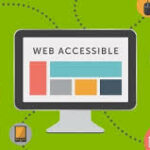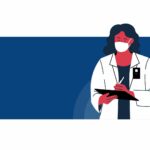In an era defined by rapid technological advancements, digital tools have transformed numerous aspects of our daily lives. That’s why these tools have become invaluable assets in driving efficiency and enhancing accessibility. One area where their potential is gaining significant momentum is healthcare. Healthcare providers and organizations unlock new possibilities to make healthcare more accessible. Naturally they can bridge the gap between patients and quality care by leveraging its power.
What is more digital tools serve as catalysts for change, empowering patients and healthcare providers alike. And by integrating them into healthcare systems, we can ensure equitable access to healthcare services for all.
One notable area where digital tools have made significant strides is in enhancing patient engagement and self-care. Interactive mobile applications empower individuals to monitor their health, track medication adherence, and access essential health information at their fingertips.
It is crucial to acknowledge its vast potential, along with their limitations. By embracing innovative solutions and tackling challenges directly, healthcare systems can unleash their transformative power. This revolutionizes healthcare accessibility and empowers individuals to unprecedentedly take control of their well-being. And we will explore how these tools reshape healthcare, discussing their benefits, implementation strategies, and future possibilities.
Four ways digital tools are reshaping healthcare
Telemedicine
Digital tools have revolutionized healthcare by enabling telemedicine, which allows patients to connect with healthcare professionals remotely. Through real-time video consultations and secure data transmission, they break down geographical barriers. Ensuring access to medical expertise for individuals in remote or underserved areas.
Patient Engagement and Self-Care
Digital tools empower patients to actively engage in their healthcare journey. Mobile applications and online platforms provide personalized health management resources. This allows individuals to monitor their health, track medication adherence, and access vital health information. These tools promote proactive self-care, enhancing patient empowerment and contributing to improved health outcomes.
Electronic Health Records (EHRs)
Digital tools have facilitated the transition from traditional paper-based medical records to electronic health records (EHRs). EHRs improve healthcare accessibility by enabling seamless sharing and exchange of patient information among healthcare providers. This streamlines care coordination, reduces errors, and enhances continuity of care, ultimately benefiting patients.
Remote Monitoring and Wearable Devices
With the advent of digital tools, remote monitoring of patients’ health conditions has become increasingly feasible. Wearable devices enable real-time monitoring of vital signs, physical activity, and sleep patterns. They transmit this data to healthcare professionals, facilitating proactive intervention, personalized treatment plans, and early detection of potential health issues.
Digital assistants
Individuals can schedule appointments and do more using voice commands or text-based interactions. This streamlined communication saves time and effort. And ensures effective engagement between healthcare providers and elderly individuals or patients with disabilities.
Actually digital assistants can enhance accessibility by integrating with various digital tools. And provide reminders to elderly patients to adhere to their medication schedules and prevent potential complications.
Digital assistants possess the ability to offer personalized support and guidance. You can tailor to the unique needs of elderly individuals and patients with disabilities. They provide information on specific conditions, offer health education materials, and suggest ways to manage daily activities and self-care.
mHealth
mHealth digital tools offer underserved populations more flexible healthcare options. These innovative tools leverage technology to bridge gaps in access to quality care. Through mobile applications and remote monitoring devices, individuals in underserved communities can receive medical support and guidance conveniently. They empower patients, enhance healthcare accessibility, and have the potential to improve health outcomes for underserved populations.
Conclusion
The integration of digital tools has emerged as a transformative force in making healthcare more accessible. By harnessing the power of technology, healthcare systems can overcome geographical limitations, enhance patient engagement, and bridge gaps in care.
Digital tools provide convenient and personalized healthcare options, empowering individuals to actively engage in their well-being. Moreover these tools have the potential to revolutionize healthcare delivery and enhance outcomes for diverse populations. Embracing the possibilities of digital tools presents a remarkable opportunity to establish an inclusive and patient-centered healthcare ecosystem.









